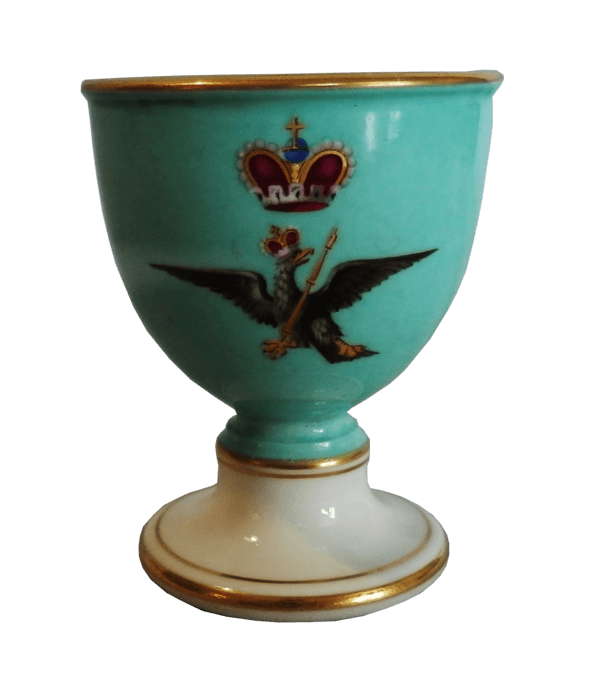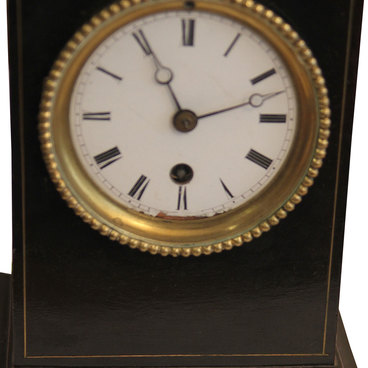This service belonged to the Gorchakov family, who were descendants of an ancient princely house.
Dmitry Gorchakov was born in 1828. During the Hungarian military campaign, the duke was serving in the Pavlograd Imperial Hussar Regiment that defended Sebastopol. When the Hungarian War was over, he became aide-de-camp to Emperor Alexander II. However, he did not last long in that post. According to the duke’s friend, Count Sergey Sheremetev, Gorchakov had to resign because of his uneasy temper: “He had never been conciliatory and was disliked for his acerbic tongue and an attitude problem”.
In 1876 Gorchakov moved to Baryatino – an estate in the vicinity of Tarusa. He took up collecting there. He often travelled and brought pictures, graphics and handicraft, in particular, bone china, silver and crystal. He also collected an excellent library of almost 6 thousand volumes.
The duke gave his collection to his son Sergey, who became the governor of Kaluga in 1909. In his high position Gorchakov Jr. helped to implement Pyotr Stolypin’s agrarian reform, in recognition of which he was awarded a badge of merit for land-use planning. Upon his initiative, Kagula saw the opening of a new church and a Community Hall in memory of the 1812 Patriotic War, and stones put on the community graves of those killed in action near Maloyaroslavets.
In 1915, Sergey Gorchakov left the post and after the revolution actually stopped coming to his estate in Baryatino, having found a job in one of Moscow magazines. In 1918 the duke was arrested upon the orders of the Soviet Government and was deported to the Tobolsk Province where he died of typhoid 9 years later.
In 1918 Dmitry Ivanov, an emissary of the Steering Committee in charge of museums, protection of monuments of art, antiques and the environment by the People’s Commissariat for Education, was seconded to Baryatino to catalogue valuable items kept in the estate and to transfer them to the National Museum Foundation. Employees of the provincial education department gave the following description of his visit’s outcome: ‘All valuable items most of which were paintings, drawings and prints of Russian and foreign artists, crystal, bronze, valuable stylish German furniture of the 18th century, were taken to two library rooms and sealed off there in the presence of the emissary of the Moscow Department and other persons. Besides, this estate has a large library both of Russian and foreign literature…The library books were put into forty large boxes that are kept in shambles in the coach house….’
Gradually, some items of the Gorchakov collection began to emerge in Kaluga’s museums. However, what happened to be saved were just random assets. The rest of the property was sold out in Baryatino in 1925, including furniture, an ancient coach and a few paintings. During the Great Patriotic War, 355 prints, paintings by Delacroix and Maris from the Gorchakov collection vanished from city museums. At present the Kaluga United Memorial Museum may boast collections of bone china and weapons of the Gorchakov family.
Dmitry Gorchakov was born in 1828. During the Hungarian military campaign, the duke was serving in the Pavlograd Imperial Hussar Regiment that defended Sebastopol. When the Hungarian War was over, he became aide-de-camp to Emperor Alexander II. However, he did not last long in that post. According to the duke’s friend, Count Sergey Sheremetev, Gorchakov had to resign because of his uneasy temper: “He had never been conciliatory and was disliked for his acerbic tongue and an attitude problem”.
In 1876 Gorchakov moved to Baryatino – an estate in the vicinity of Tarusa. He took up collecting there. He often travelled and brought pictures, graphics and handicraft, in particular, bone china, silver and crystal. He also collected an excellent library of almost 6 thousand volumes.
The duke gave his collection to his son Sergey, who became the governor of Kaluga in 1909. In his high position Gorchakov Jr. helped to implement Pyotr Stolypin’s agrarian reform, in recognition of which he was awarded a badge of merit for land-use planning. Upon his initiative, Kagula saw the opening of a new church and a Community Hall in memory of the 1812 Patriotic War, and stones put on the community graves of those killed in action near Maloyaroslavets.
In 1915, Sergey Gorchakov left the post and after the revolution actually stopped coming to his estate in Baryatino, having found a job in one of Moscow magazines. In 1918 the duke was arrested upon the orders of the Soviet Government and was deported to the Tobolsk Province where he died of typhoid 9 years later.
In 1918 Dmitry Ivanov, an emissary of the Steering Committee in charge of museums, protection of monuments of art, antiques and the environment by the People’s Commissariat for Education, was seconded to Baryatino to catalogue valuable items kept in the estate and to transfer them to the National Museum Foundation. Employees of the provincial education department gave the following description of his visit’s outcome: ‘All valuable items most of which were paintings, drawings and prints of Russian and foreign artists, crystal, bronze, valuable stylish German furniture of the 18th century, were taken to two library rooms and sealed off there in the presence of the emissary of the Moscow Department and other persons. Besides, this estate has a large library both of Russian and foreign literature…The library books were put into forty large boxes that are kept in shambles in the coach house….’
Gradually, some items of the Gorchakov collection began to emerge in Kaluga’s museums. However, what happened to be saved were just random assets. The rest of the property was sold out in Baryatino in 1925, including furniture, an ancient coach and a few paintings. During the Great Patriotic War, 355 prints, paintings by Delacroix and Maris from the Gorchakov collection vanished from city museums. At present the Kaluga United Memorial Museum may boast collections of bone china and weapons of the Gorchakov family.



